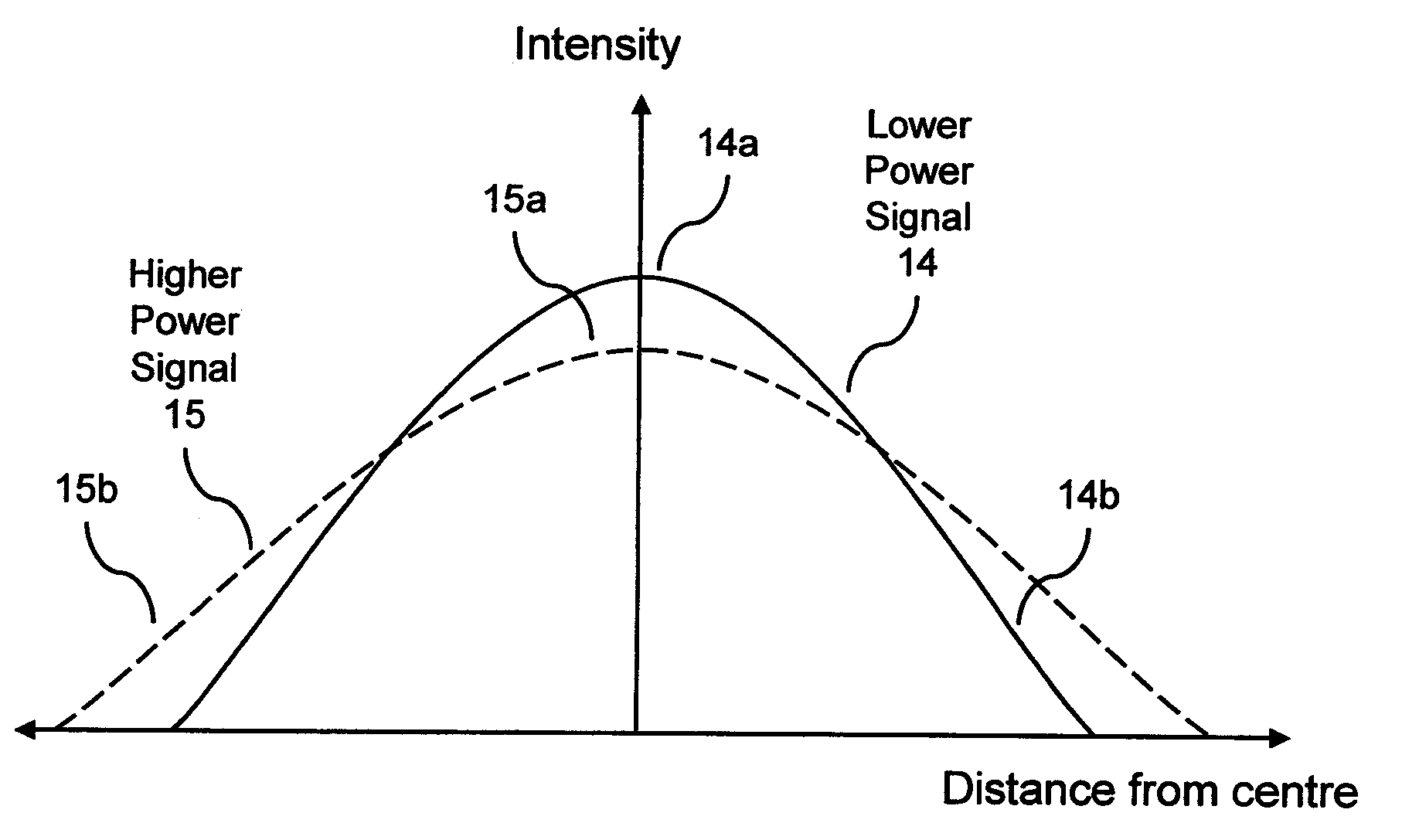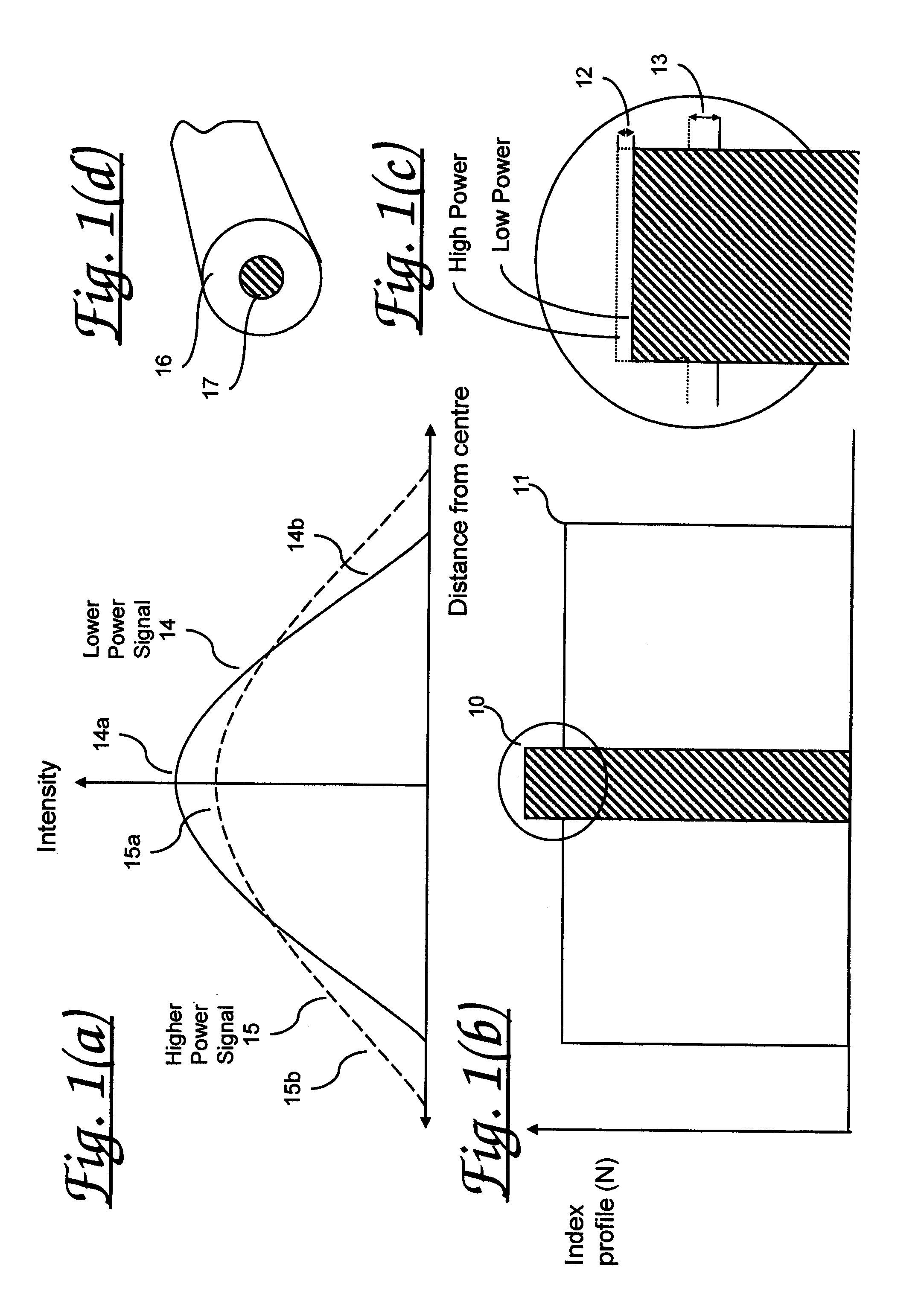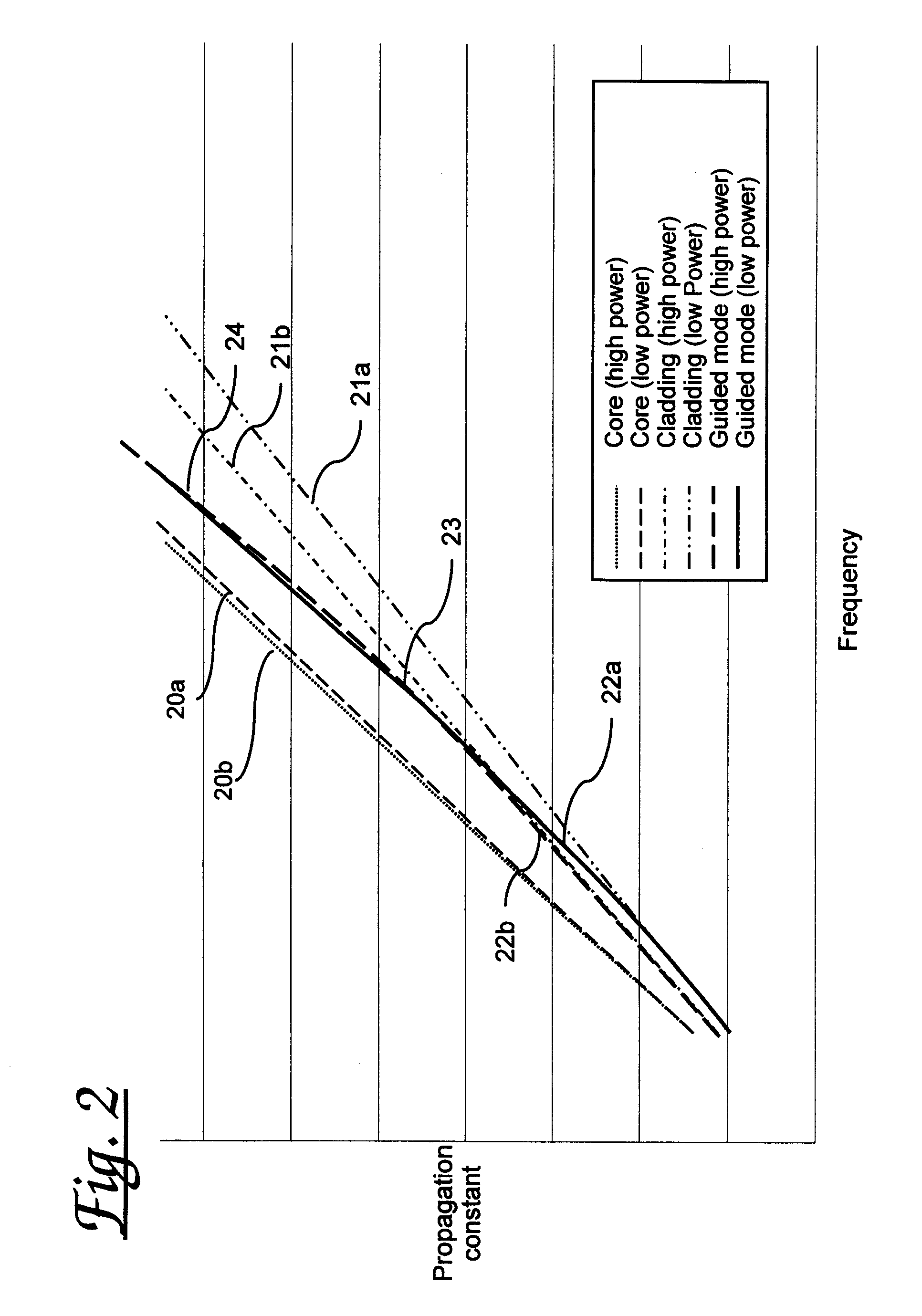Optical waveguide
a waveguide and optical technology, applied in the field of optical waveguides, can solve the problems of noise and cross-talk between individual optical signals, limit the effective distance over which optical signals can be transmitted, and exhibit characteristics of optical fibres, so as to reduce the kerr effect and increase the diameter of the mode field
- Summary
- Abstract
- Description
- Claims
- Application Information
AI Technical Summary
Benefits of technology
Problems solved by technology
Method used
Image
Examples
third embodiment
[0107]A third embodiment, illustrated in FIG. 4(c), employs a two-dopant fibre design. This arrangement comprises a doped core 46 surrounded by a doped annulus 47 within a cladding material 48, 49. In the case illustrated the doped core 46 has a higher refractive index 40 than that 42 of the annulus 47 which, in turn, has a higher refractive index than that 41, 43 of the surrounding fibre. The prime requirement is to achieve an increased mode field diameter with power, and this can be achieved by either increasing index 42 of annulus 47, or increasing the index 41 of annulus 49 (the inner cladding) relative to the index of the core 46. Suitable dopants include Silicon, Germanium and Fluorine or other suitable elements together with Oxygen to form the oxides such as Silica, Germania etc. Fluorine has the valuable property as a dopant, that it reduces the index of the Silica, and that increased concentration reduces the nonlinearity. For Germania, both increase. Fluorine is valuable s...
second embodiment
[0115]FIG. 5(b) shows a graph of refractive index, N, across a cross-section of such a fibre. The periodic portion of the structure comprises successive bands 51, 52 of differing refractive index arranged around the core 50. In particular, there are instances of successive bands in which the refractive index 51 of the inner band is lower than that 52 of the outer band as was the case in the second embodiment between the core and the doped annulus.
[0116]The dimensions of the periodic structure should be such as to cause transverse resonance (of the forward propagating field) within the periodic structure, and can be predicted (designed) using numerical simulation tools well known to those practiced in the art of fibre design. Adjacent bands of the periodic structure may also exhibit different variations of refractive index with signal power, so that as the signal power varies, so the difference in refractive index between successive bands also varies. Increasing the index of layers 5...
PUM
| Property | Measurement | Unit |
|---|---|---|
| refractive index | aaaaa | aaaaa |
| refractive index | aaaaa | aaaaa |
| refractive index | aaaaa | aaaaa |
Abstract
Description
Claims
Application Information
 Login to View More
Login to View More - R&D
- Intellectual Property
- Life Sciences
- Materials
- Tech Scout
- Unparalleled Data Quality
- Higher Quality Content
- 60% Fewer Hallucinations
Browse by: Latest US Patents, China's latest patents, Technical Efficacy Thesaurus, Application Domain, Technology Topic, Popular Technical Reports.
© 2025 PatSnap. All rights reserved.Legal|Privacy policy|Modern Slavery Act Transparency Statement|Sitemap|About US| Contact US: help@patsnap.com



